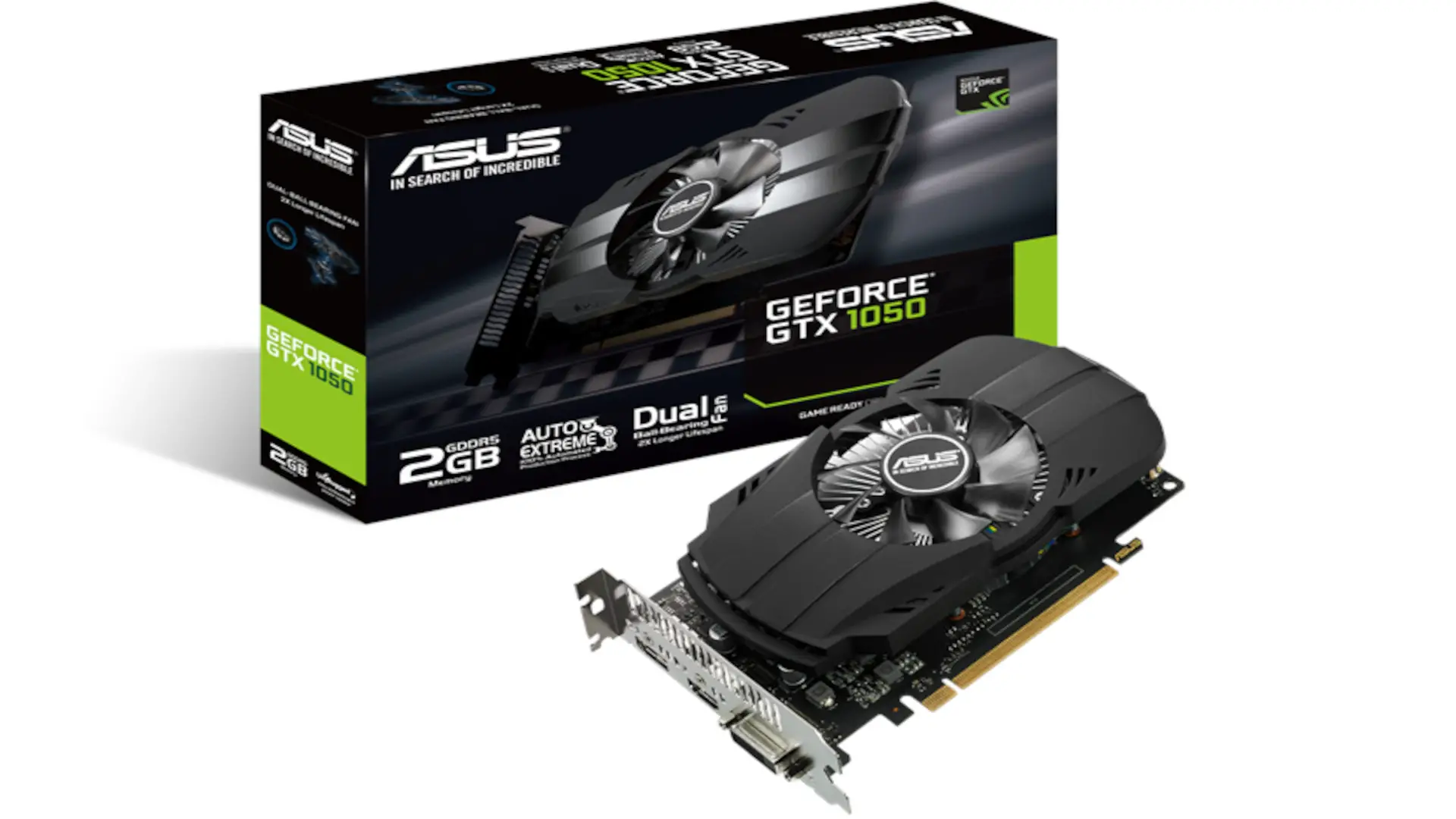I provide you with my ASUS Phoenix GTX 1050 2GB Review and specifications in this article. On October 25, 2016, NVIDIA released the GeForce GTX 1050, a mid-range graphics card.
Looking to assemble a gaming setup on the smallest possible budget? The Nvidia GTX 1050 is the most affordable graphics card of the Pascal generation and is capable of running some of the most well-liked eSports titles in Full HD. Games like Overwatch, CounterStrike: Global Offensive, and Fortnite are examples of this type.
However, if you’re ready to lower your settings a little bit, this GPU can play the newest games at Full HD, exactly like the AMD Radeon RX 460 that it competes with. With a little modification, it can even run games like Shadow of the Tomb Raider and Civilization VI.
The price of this card is still hovering around $100, and because it is so expensive, it competes with graphics cards from the opposite side like the RX 400/500 series, which are available for roughly the same price and also come in 4GB versions. Is this card, therefore, a good deal? Must you purchase this card? Most likely not, but it does have some interesting circumstances and positive aspects that I shall discuss in the chapter after this one.
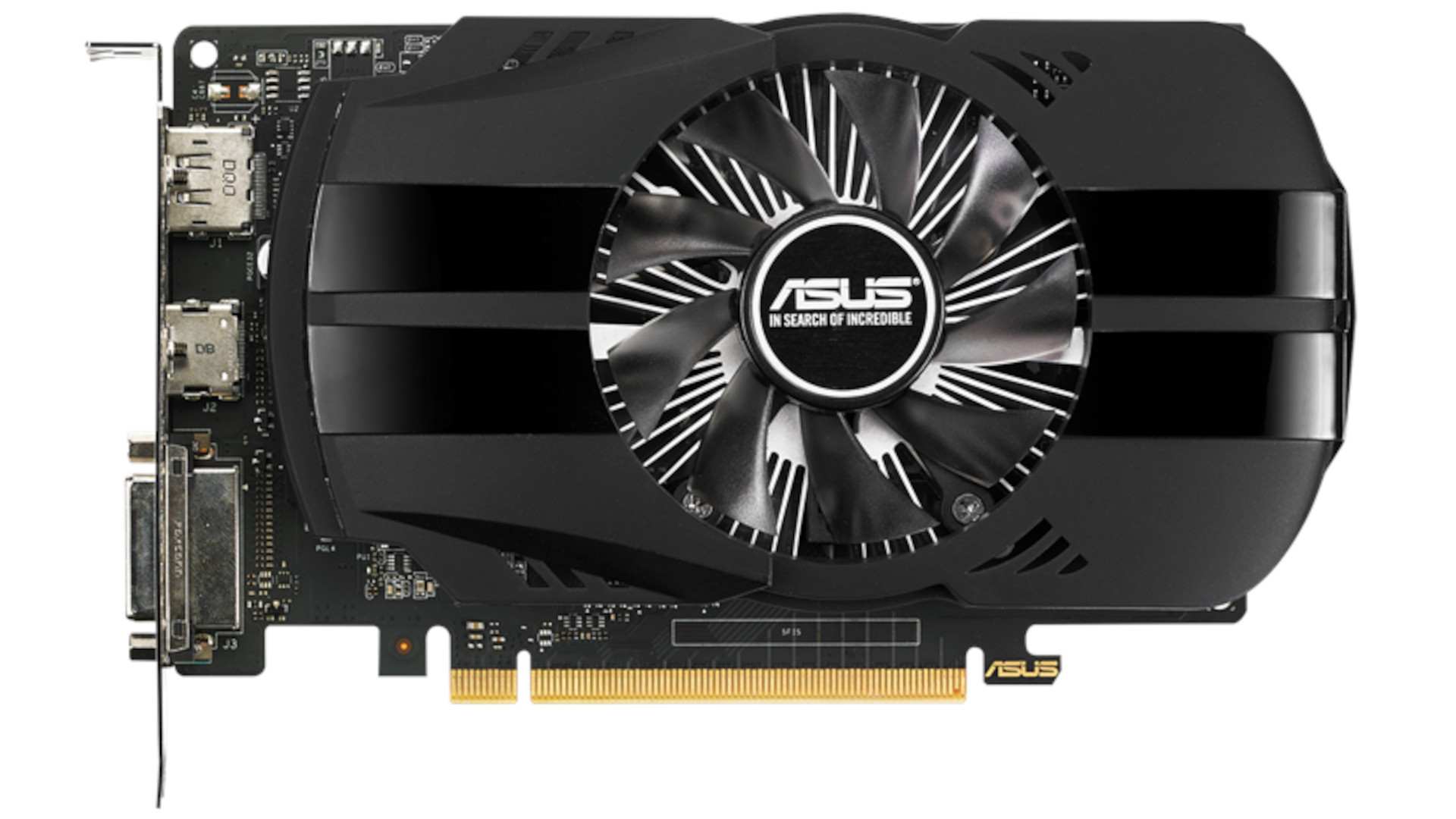
ASUS Phoenix GTX 1050 2GB Specs
The card supports DirectX 12 and is constructed using a 14 nm process and the GP107 graphics processor in its GP107-300-A1 form. This guarantees that GeForce GTX 1050 will work with all current games. The GP107 graphics processor has 3,300 million transistors and a die area of 132 mm2, making it a chip of ordinary size.
NVIDIA has disabled some shading units on the GeForce GTX 1050 to attain the product’s target shader count, in contrast to the fully unlocked GeForce GTX 1050 Ti, which uses the identical GPU but has all 768 shaders active.
It has 32 ROPs, 40 texture mapping units, and 640 shading units. The GeForce GTX 1050 and 2,048 MB GDDR5 RAM from NVIDIA are connected by a 128-bit memory interface. Memory is running at 1752 MHz, and the GPU is functioning at 1354 MHz, with a boost to 1455 MHz (7 Gbps effective).
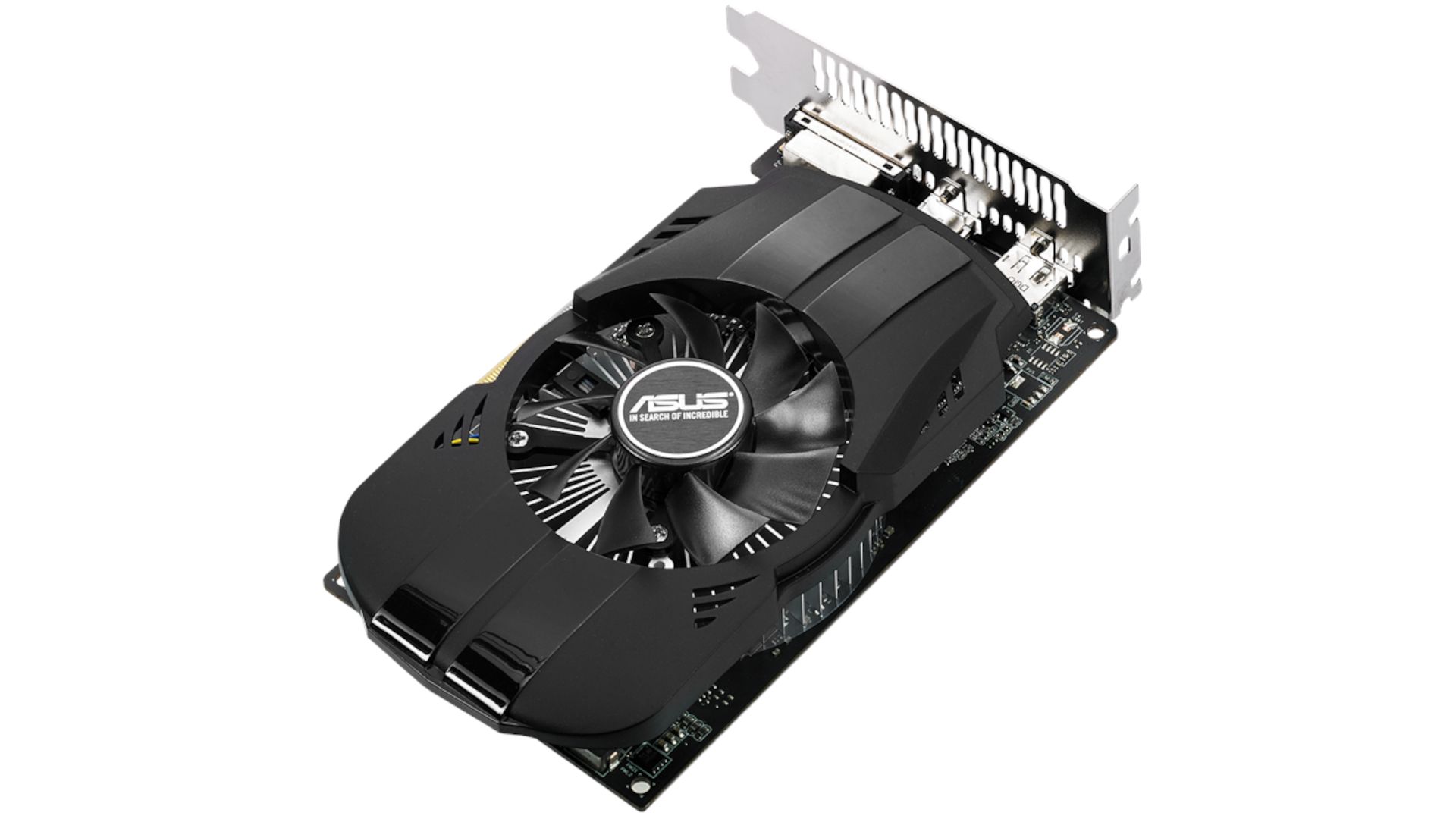
The ASUS Phoenix GTX 1050 2GB is a dual-slot card, thus it doesn’t need a separate power connector and has a maximum power draw of 75 W. There are three display outputs: one DVI, one HDMI 2.0, and one DisplayPort 1.4a. PCI-Express 3.0 x16 is used to link GeForce GTX 1050 to the rest of the system.
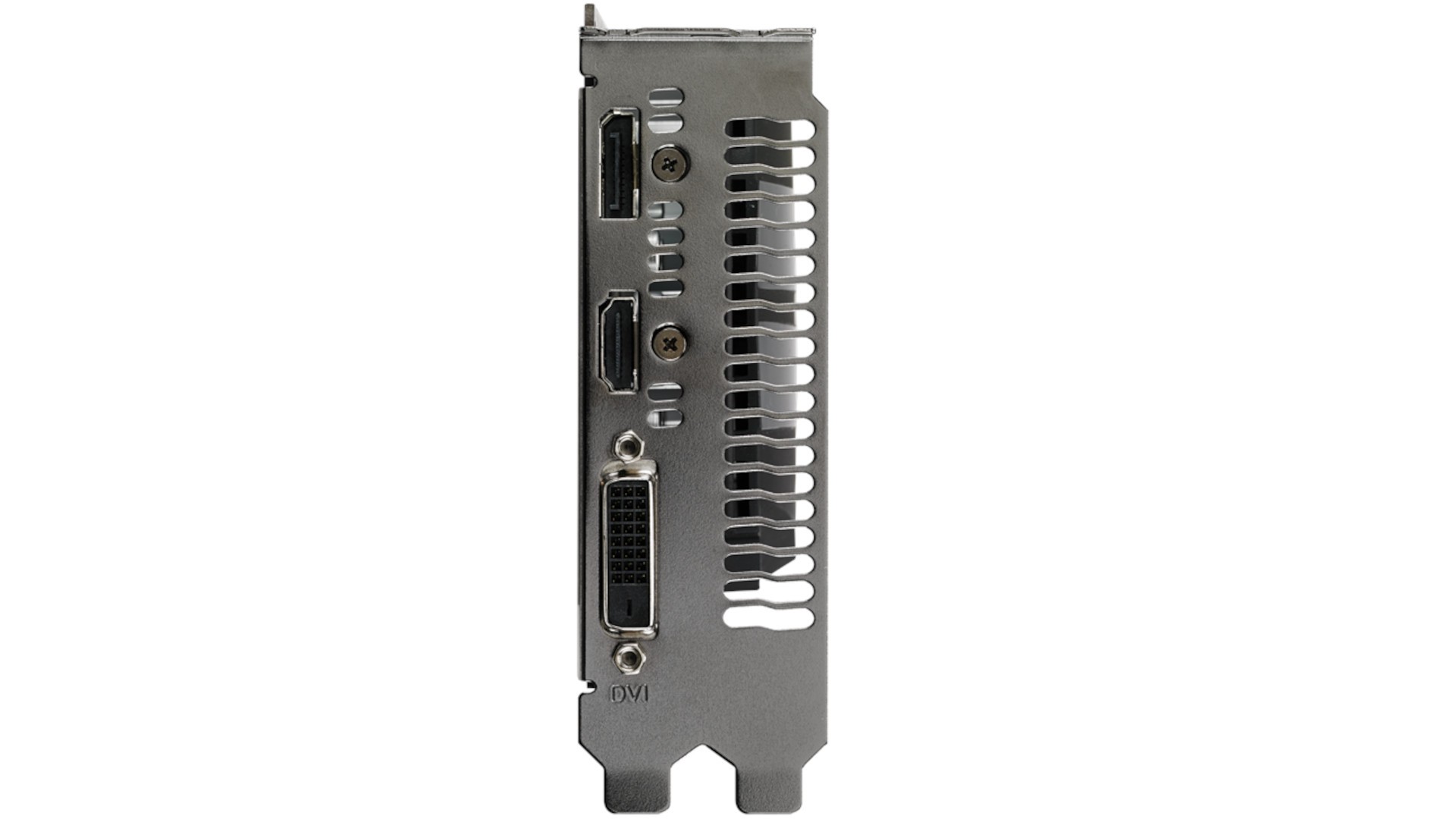
ASUS Phoenix GTX 1050 2GB has a dual-slot cooling system and measures 145 mm long by 111 mm wide. On debut, it cost 109 US dollars.
The specifications table that follows can better display the specifications that I mentioned in the paragraph above.
| Name | Geforce GTX 1050 |
| Manufacturer | Nvidia |
| Launch Date | 25th October 2016 |
| Bus Standard | PCI Express 3.0 |
| OpenGL | OpenGL®4.5 |
| Video Memory | 2GB GDDR5 |
| Engine Clock | GPU Boost Clock: 1455 MHzGPU Base Clock: 1354 MHz |
| CUDA Core | 640 |
| Memory Speed | 7008 MHz |
| Memory Type | GDDR5 |
| Memory Size | 2GB |
| Memory Interface | 128-bit |
| Resolution | Digital Max Resolution 7680 x 4320 |
| Interface | Yes x 1 (Native DVI-D)Yes x 1 (Native HDMI 2.0b)Yes x 1 (Native DisplayPort 1.4)HDCP Support Yes (2.2) |
| Maximum Display Support | 3 |
| Dimensions | 19.2 x 11.1 x3.7 Centimeter |
| Recommended PSU | 300W |
Benchmarks & Gaming of the ASUS phoenix GTX 1050 2gb
This was a mid-range card when it was first released, but now that it is 6 years old, 2 GB of VRAM is starting to get low for 1080p gaming. Nevertheless, this card is still capable of playing a lot of AAA titles in that resolution, depending on which details.
We will now actually go into some data because we evaluated this graphic and compared it to other RX 400 cards as well as its rival, the RX 460. Let’s start now.
As I stated in my earlier article, an fps of less than 30 should not be considered fluid for gaming. So, by sacrificing specifics, we will stay within that range.
CS:GO, a fast-paced shooter played at the highest level by eSports professionals, is by far the easiest game on the exam. It can be played on pretty much any graphics card, even integrated Intel HD Graphics. Even yet, higher frames per second are always preferable in these kinds of games, especially if you have a high-end display with a very fast refresh rate.
To test the ASUS Phoenix GTX 1050 2GB capabilities, I ran CS:GO at High settings in Full HD with no frame rate caps.
Unsurprisingly, the GTX 1050 scored a sparkling 256 frames per second in this test, outperforming the less expensive RX 460 by 19%.
Why limit yourself when this GPU isn’t designed for AAA gaming? Hitman is one of the hardest games with an integrated benchmark, thus this should tax the GTX 1050 to the breaking point. To prevent the 2GB of memory from becoming unusable, I ran the benchmark at Medium settings. The test was carried out in Direct3D 12 mode, which favors AMD in general.
The score was 46fps, which is roughly 12% less than the RX 460. But this wasn’t a surprise. The GTX 1050 produced substantially greater frames per second when used in DirectX 11 mode, well above 55fps.
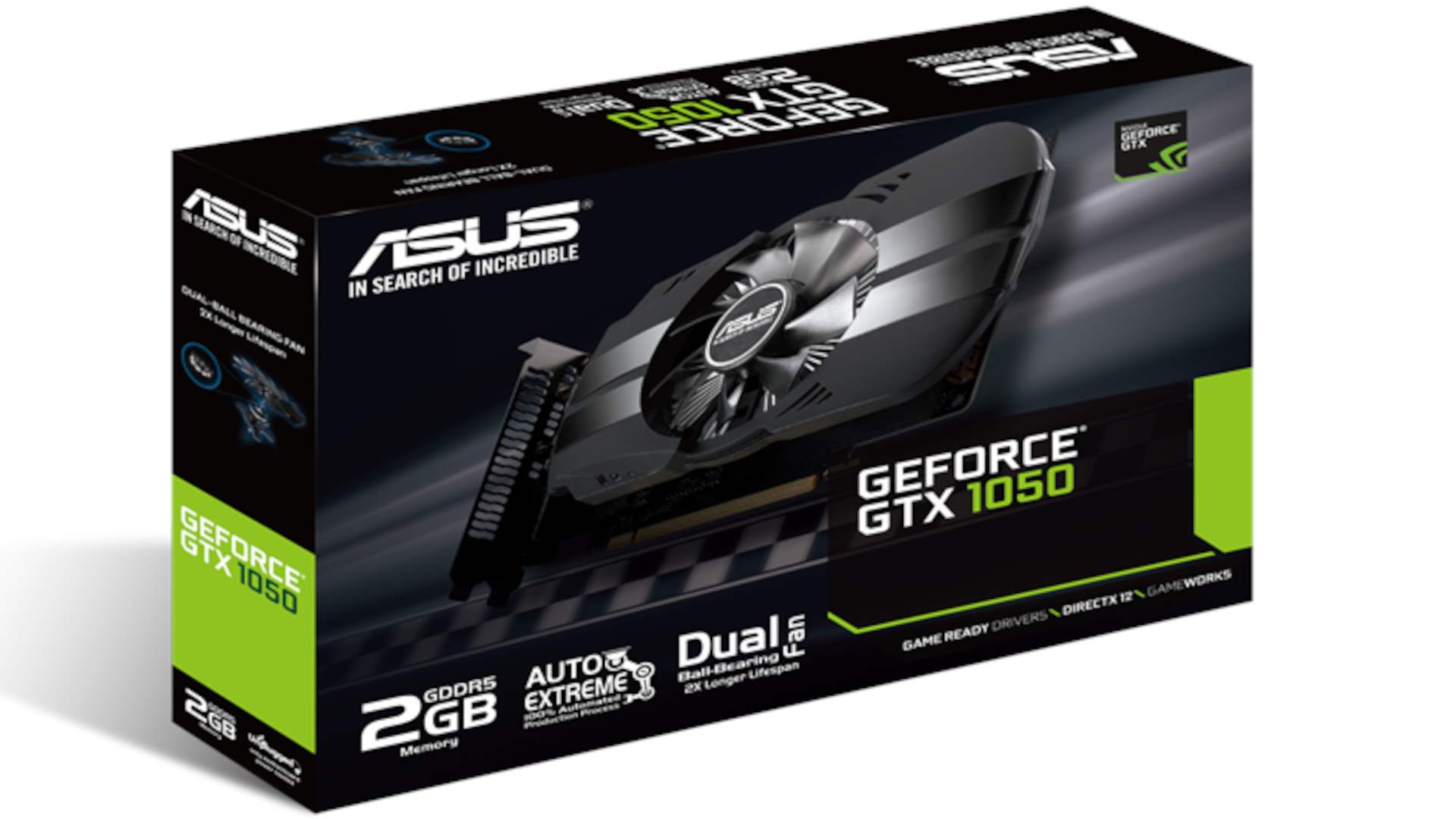
Conclusion
Therefore, even though the RX 460 is currently a little less expensive than the GTX 1050 and cards with 4GB of RAM are available in this price range, I wouldn’t recommend this card at the moment. The only exception would be if you only play esports and won’t be playing other, more demanding games.
The TDP feature on this card, though, means that you don’t need a second power supply, which is great if you’re creating a low-end esports computer.
ASUS Phoenix GTX 1050 2GB can be an excellent and even great graphics card if your expectations are reasonable, but don’t be shocked if you find yourself yearning for a faster card shortly.
Can Asus Phoenix GTX 1050 2GB be used for mining?
In short, the world of cryptocurrency is filled with a wide variety of coins. And neither this card nor any other 2GB cards will allow you to mine the most lucrative coin, such as Etherium. These days, 4GB vram or more would be the very minimum for that. However, 2GB cards, such as the Asus Phoenix GTX 1050 2GB can mine some cryptocurrencies, such as Ravencoin, but the real question is whether it will be profitable.
There is no doubt that you can mine, but will it be profitable?
The answer is that you may mine with any GPU/CPU and any memory card (GB), but you must earn more raven coins than your GPU or laptop will cost you in electricity. So, yes, you can mine, but it won’t bring in any money, and you’ll only make losses (due to the electricity cost). Additionally, if you attempt to use your CPU, it will eventually crash, doing you more harm than good.
Is Asus Phoenix GTX 1050 2GB good for gaming?
In the past, entry-level cards like the Asus Phoenix GTX 1050 2GB and its more powerful sister, the GTX 1050 Ti 4GB, were available. But today, let’s see.
This card’s pricing now is roughly $100, and it is regarded as a low-end card because most modern games need at least 4GB of RAM to run at reasonable settings. But it’s a different story in the world of esports.
The GTX 1050 is more versatile than you may imagine, and yes, you can play some AAA games, but you have to give up a lot of quality and detail. But one area where it excels is for those who like to play primarily “esports” games. Games like CS:GO, League of Legends, Dota 2, Rocket League, and others fall under this category. All of these games may be played on low-end hardware, which contributes to their success in part.
I’ll list the current AAA games that can be played on this card in the text that follows, along with the frame rates that it can produce at each setting.
- Grand Theft Auto IV – Although this is an older game, it can handle 1080p quality on maximum settings at about 60 frames per second.
- Grand Theft Auto V – Legendary game, where this card also manages to attain about 60 frames per second due to the game’s excellent optimization and high 1080p resolution settings.
- Red dead redemption 2 – Here, in one of the greatest video games ever created, things get quite difficult with 2GB VRAM. It manages to maintain 60 frames per second, but at the cost of 720p and reduced textures.
- Metro Exodus – The ASUS Phoenix GTX 1050 2GB in this 2019 title scores roughly 70 frames per second on 720p medium settings.
- Horizon zero dawn – 720p low settings, game from 2020, also having trouble with this card – 60fps.
- Mafia: definitive edition – 720p low settings, around 60 fps.
- Dirt 5 – In the 2020 racing game, the ASUS Phoenix GTX 1050 2GB manages to attain very low frame rates of about 30 fps, although in 1080p.
- Cyberpunk 2077 – one of the most GPU-intensive games available today, and this card barely allows for tolerable frame rates of approximately 30 in 720p.
- Assassin’s Creed Valhalla – newest entry in the Assassin’s Creed series, this card produces outcomes akin to those in Cyberpunk 2077.
- New world – Amazon’s newest MMORPG game reaches about 50 frames per second on basic settings at 1080p, which is average for 2GB.
- Far cry 6 – One of the most recent games, played at 720p resolution and low settings, runs at 60 frames per second or higher.
We can actually assess the power of this card in this type of build because the system specifications for these tests are: CPU i5 11th gen, 16GB of ram, so basically not the finest possible components but not the worst one either.
So what do these results show? If you’re not a serious gamer, the Asus Phoenix GTX 1050 2GB is good choice, if you intend to occasionally play esports and some older games, such as those from 2016 and earlier. Because modern games need at least 4GB of VRAM in order to run at reasonable settings.
Can Asus Phoenix GTX 1050 2GB do 4K?
Yes and no, to sum up. Yes, Asus Phoenix GTX 2GB does 4K resolution for multimedia purposes on a device that is compatible with it, such as a 4K TV or PC monitor, allowing you to watch 4K videos or use Windows or Linux with a 4K desktop resolution.
However, no in terms of games. In terms of gaming performance, the GTX 1050Ti is still roughly 30% slower than a GTX 1060, which is once again regarded as a GPU for FHD gaming on high/ultra quality. A GTX1080 or Vega64 would be required as a minimum to play games at 4K resolution.
Is Asus Phoenix GTX 1050 2GB a silent card?
The card totally shuts down its fan when it is idle (up to 60°C), which results in excellent idle fan noise.
The card is also extremely quiet when used for gaming, producing only 27 dBA, which is hardly heard. Even better, the temperature is only 65°C while under load. Since most cards are above 30 dBA, Asus Phoenix GTX 1050 2GB a silent card falls below the average, making it one of the quieter cards.
What ports are on Asus Phoenix GTX 1050 2GB?
Asus Phoenix GTX 1050 2GB ports included on this card are DVI, HDMI, and DisplayPort for connecting a display. You will need to use an active converter since, unlike earlier NVIDIA cards, the DVI connector no longer provides an analog signal. Additionally, NVIDIA updated DisplayPort to be approved for version 1.2 and ready for versions 1.3 and 1.4, enabling compatibility for 4K @ 120 Hz, 5K @ 60 Hz, or 8K @ 60 Hz with two cables.
Additionally, the GPU includes an HDMI sound device. It is compatible with HDMI 2.0b, which supports Blu-ray 3D movies and HD audio. Updates have been made to the GPU video encoding unit to support HEVC at 10-bit and 12-bit.
ASUS Phoenix GTX 1050 2GB
-
Performance - 94%94%
-
Price - 97%97%
-
Value - 96%96%

